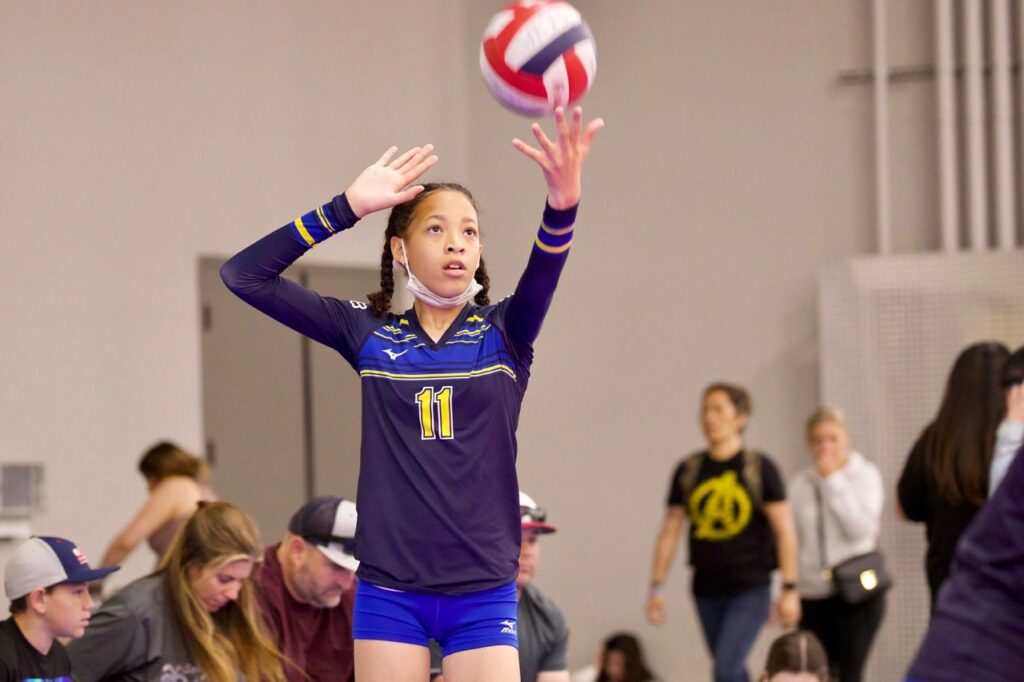Did I Do Good?
by Aviss Bell
Did I Do Good? Have you ever been asked this question? When my daughter asks me this question after a volleyball match, she is basically telling me that she needs some positive reinforcement, praise, or interaction with me. Usually, when she asks this, she already knows that she played well. I sometimes have to stop and think before answering. Why, sometimes, are we parents hesitant to provide that reinforcement or praise at first? At times, we more readily provide correction or criticism about the things they can improve on rather than focusing on the things they have done well. A behavioral approach can really help sports parents here.
What is ABA?
Applied Behavior Analysis (ABA) is an applied scientific approach to understanding and changing behavior. It is quite often used as an evidence-based treatment for Autism Spectrum Disorders, but because behavior is defined as anything a person does and says, ABA can be used in many other areas, including sports. The application of ABA techniques in sports is a growing field.
Looking At Sports Parents’ Behavior From A Different Lens
In Behavior Analysis, the concept of reinforcement is what we rely on to change any behavior. Simply put, reinforcement is a consequence that strengthens behavior. In other words, we provide reinforcement for the behaviors that we want to see more of and do not provide reinforcement for those behaviors we do not want to see. Now, of course, each kid’s internal motivation plays a huge part in their sports performance and experiences, but external reinforcement works. Some common external reinforcers that are built into youth sports include trophies, medals, increased playing time, and other recognition. Reinforcement is different for everyone and can only be considered reinforcement if the behavior that occurs before it happens more frequently in the future.
There are two general kinds of reinforcement: positive and negative
Positive reinforcement is when you add or provide something nice after a desired behavior to make it happen more in the future (“You did a great job cleaning up quickly, we can go to Starbucks”).
Negative reinforcement is when you remove something aversive after a desired behavior to make it happen more in the future (“You really helped out your teammate-you don’t have to run laps after practice”)
How do we reinforce our kids’ positive behavior?
To be most effective as, reinforcement should happen right after the behavior or skill that you’re trying to increase. There is an endless number of things that our young athletes might find reinforcing. Here are just a few reinforcers that parents can provide that might be effective for some kids (my kids) after a “successful” athletic experience:
Talking/engaging with parents
Spending time with parents
Treats
Verbal praise
Time alone/downtime
Special food or drinks
TV time
Tournament Hoodies (IYKYK)
And the list goes on and on…
This is not to say that I don’t provide these things when my kids don’t perform or play well. Many of these are things that we, as parents, do unconditionally. There are times, however, that I might provide a little something extra or something specific afterward if my goal is to increase a particular behavior or skill. The most common type of positive reinforcement that we, as sports parents, tend to use is verbal praise. This can go a long way. There are effective ways of providing praise-I‘ll break this down later.
What happens when you aren’t happy with a behavior?
On the opposite side of things, when one of my kids doesn’t perform well at a specific task, play, or behavior in sports, my goal is to provide very little reinforcement for that particular behavior. For me, this usually comes in the form of simply not mentioning or discussing their mistakes or errors with them right afterward. If they do ask my opinion about any mistakes (which rarely happens), I’ll briefly share it but usually will leave any corrections or critiques up to the coach.
Isn’t that bribery?
At this point, you might be thinking that this idea of providing reinforcement sounds like bribery. Positive reinforcement and bribery are two very different things, and the difference is in the timing. Take a look at these examples:
My daughter scored only two points in the first set. When it’s over, I say, “If you score 8 points in the next set, I’ll get you Starbucks.”
Before my son’s race, I tell him, “If you beat your best time, you won’t have to do your chores later.”
During a basketball game, my daughter listened to the coach and scored 14 points. Afterward, I say, “You were so coachable and scored a lot for your team! Let’s go get some ice cream”.
The first two examples could be considered bribery, while the last one is considered to provide positive reinforcement. Bribery usually involves the mention of the reward before the behavior occurs (or to stop an undesired behavior that’s already happening), and reinforcement always occurs after the behavior of interest. Sometimes the line between the two can be very thin. (Let the record show that I have knowingly engaged in bribery in the past-we all have.)
So, did she do good?
So, when my daughter asks, “Did I do good?” I make it a point to think of the positive things that she did that I’d love to see more of (like supporting her team, great hustle, or listening to the coach) even if she made mistakes or didn’t score many points that day. When I answer her “yes,” I make sure that I’m specific about the things she did well, providing positive reinforcement for those things.
The concept of reinforcement is the most important principle in behavior change, and using it can be an effective superpower for sports parents!
and has an educational background in Psychology and Sports.
